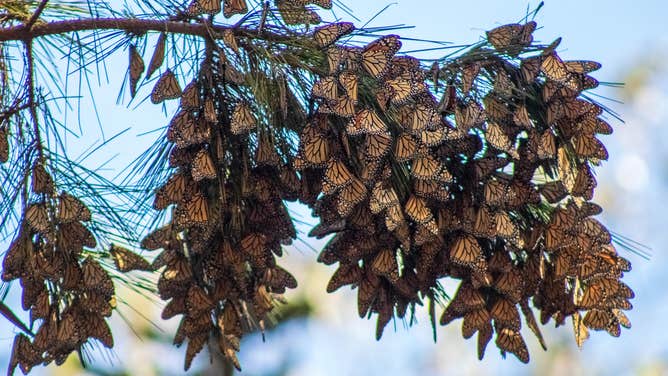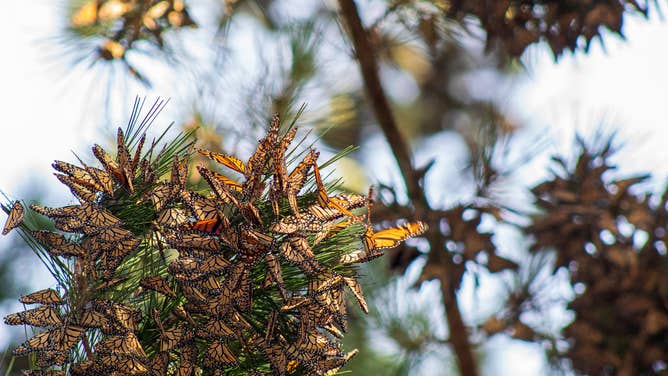Initial Thanksgiving western monarch butterfly count shows promise with highest total in 20 years
The preliminary western monarch butterfly count found more than 300,000 monarch butterflies across 183 sites in California. According to the Xerces Society, these early results are the highest totals since 2000.
Fast facts about monarch butterflies
Learn more about migratory monarch butterflies -- the iconic orange-and-black insects that signal spring and summer.
With the final tally of western monarch butterflies still ongoing, the Xerces Society for Invertebrate Conservation shared some excellent news following the annual Thanksgiving butterfly count: Monarch butterfly numbers are the highest in 20 years.
Volunteer scientists participate in the butterfly count every year in the three weeks around the Thanksgiving holiday to document the western monarch population during the overwintering season, which runs from October to March.
This year, volunteers scoured nearly 200 monarch wintering sites along the Pacific Coast from Nov. 12 to Dec. 4 in search of the orange and black butterflies.
PESTICIDE-FREE MILKWEED FOR BUTTERFLY GARDENS MAY BE HARD TO FIND AT NURSERIES, NEW STUDY FINDS
The preliminary count results show more than 300,000 monarch butterflies across 183 sites in California. Volunteers are still submitting data. According to the Xerces Society, these early results are the highest totals since 2000.

Western monarch butterflies spotted in Pacific Grove, California during the 2022 monarch Thanksgiving count. (Image: Isis Howard/Xerces Society)
Volunteers recorded some of the most significant butterfly numbers in Santa Barbara, Ventura and San Luis Obispo counties. More than 34,000 butterflies were found at a private property site in Santa Barbara County.
These numbers are a significant increase compared to the record-low count in 2020 of around 2,000 butterflies. The Xerces Society credits some of the success to more sites being included in the survey, but overall the numbers give hope to the vulnerable monarch population.
Last year's count also offered good news, with nearly 250,000 butterflies counted, the highest total in five years.
HOPE FLOATS: 2021 WESTERN MONARCH BUTTERFLY COUNT YIELDS HIGHEST TOTAL IN 5 YEARS
Still, western monarch butterfly numbers are about 5% of those that overwintered on the Pacific Coast in the 1980s.

Western monarch butterflies spotted in Pacific Grove, California during the 2022 monarch Thanksgiving count. (Image: Isis Howard/Xerces Society)
"It's imperative that this positive news is also met with the understanding that the population has declined significantly since the 1980s, when western monarchs numbered in the low millions," the Xerces Society said. "There continues to be very little meaningful protection for the species or its habitat; overwintering sites, in particular, continue to be destroyed and damaged each year."
MONARCH BUTTERFLIES ARE NOW LISTED AS ENDANGERED
Monarchs have faced massive declines over decades due to habitat loss at overwintering sites in California.
Conservation biologists agree pesticides and development killing off milkweed, the monarchs' leading food and habitat source, is the greatest threat to the North American monarch population.
The final results of the 2022 count will be announced in late January.
